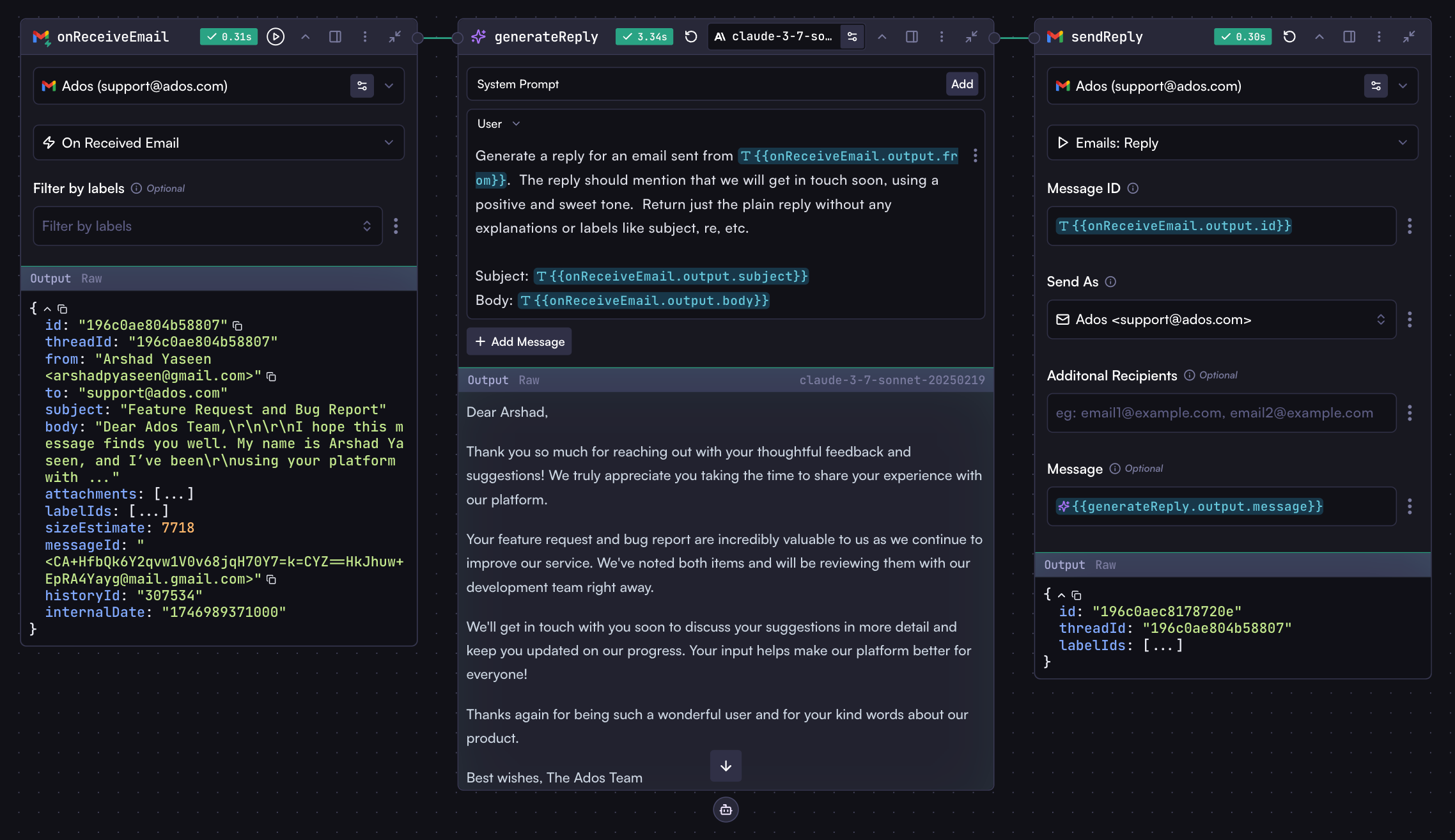What Are Trigger Steps?
Trigger steps initiate workflows based on specific events or conditions. They serve as the starting point of your workflow, activating when certain events occur.Types of Trigger Steps
There are many types of triggers available:- Slack: On send message, On reply
- Gmail: On receive email, On send email
- Google: Sheets, Calendar, Drive
- Notion: Database and page triggers
- And many more…
Identifying Trigger Steps
In the step selection modal, trigger steps are marked with a green zap icon overlay on the integration logo, making them easy to identify.How Trigger Steps Work
As the starting point of your workflow, trigger steps:- Cannot have incoming step connections
- Execute all connected steps when their triggering event occurs
- Pass event data to connected steps
What Are Action Steps?
Action steps interact with external services to perform specific operations. They complement trigger steps by enabling your workflow to not only respond to events but also take actions in various systems. Examples of action steps include:- Sending emails
- Posting Slack messages
- Creating Google Calendar events
- Updating spreadsheet data
- Creating content in Notion
Building an Automated Email Reply System
Let’s look at a practical example of how trigger and action steps work together:- An “On Received Email” trigger step detects new incoming emails
- A Model step processes the email content and generates an appropriate reply
- A “Send Email” action step sends the generated reply back to the sender
